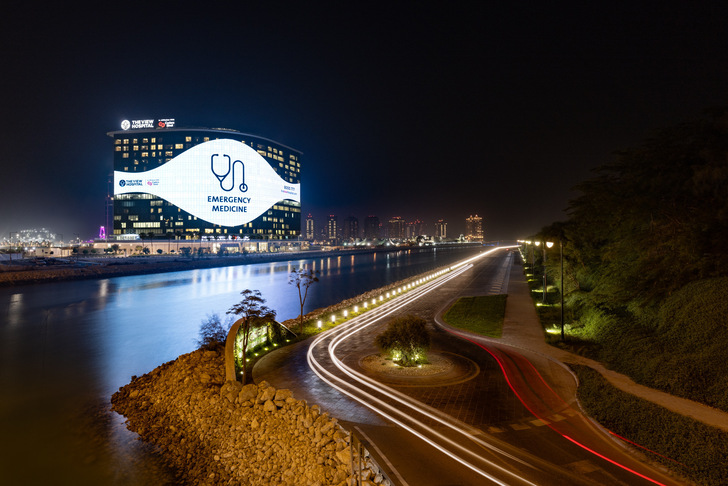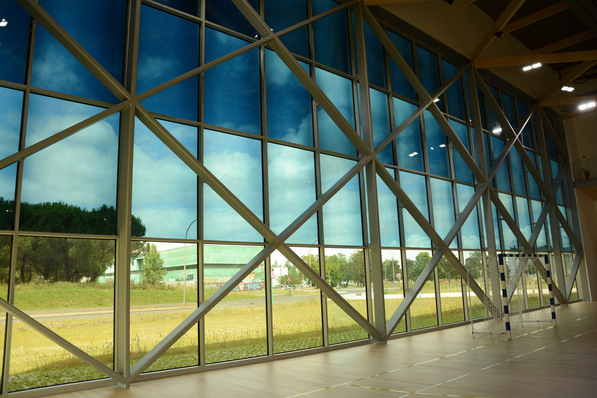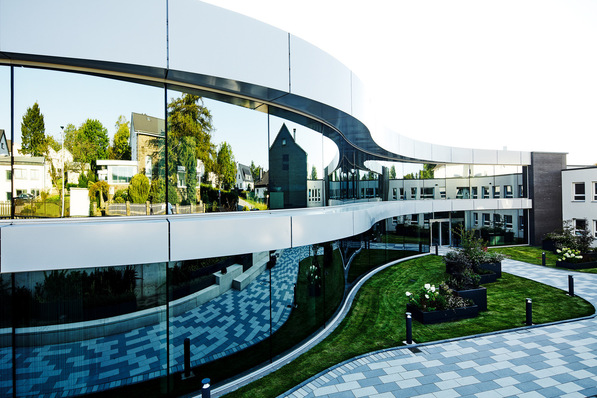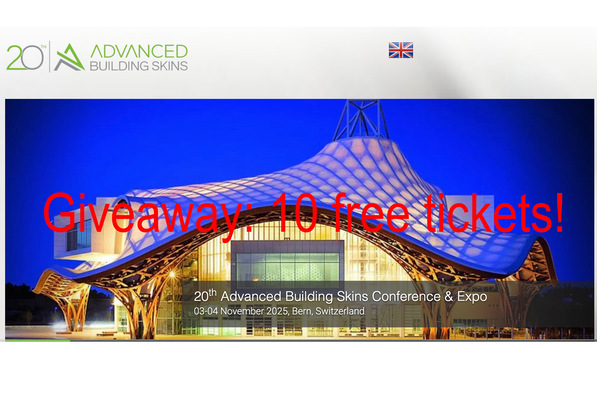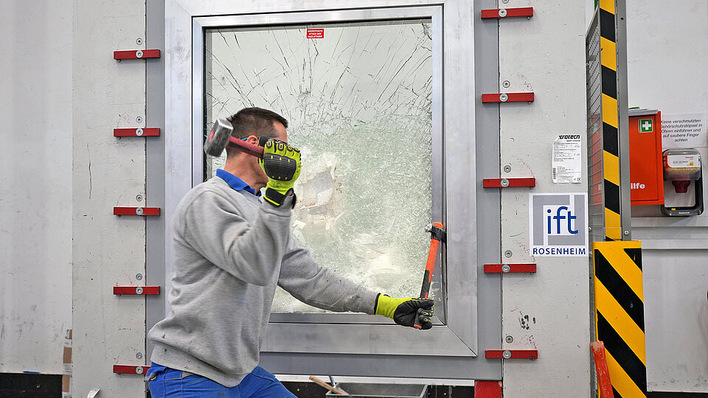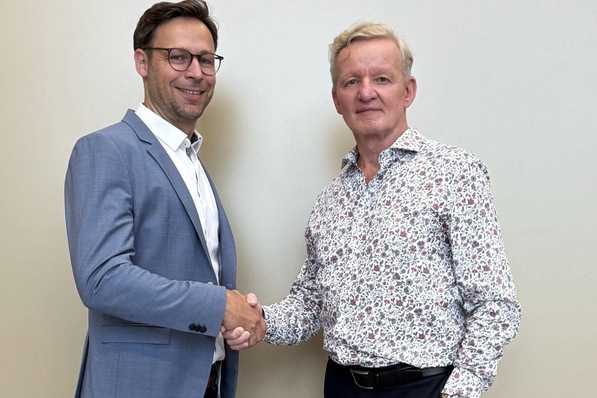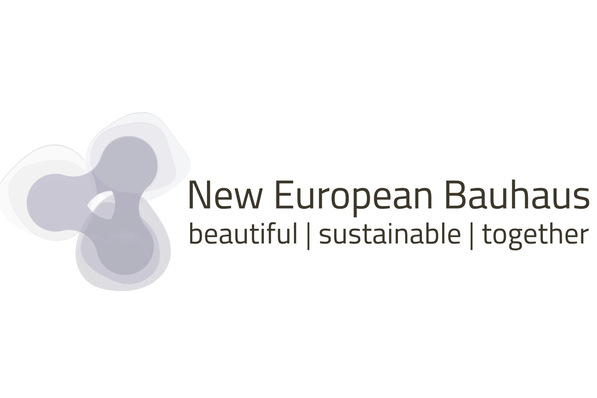A new clinic in Doha, Qatar, shows that media facades can not only transmit adverts or infotainment, but can also be part of an architectural concept. ‘The View Hospital’ is located directly on the water - and this fantastic location is thematically picked up on with the help of integrated LED lighting on the huge glass facade.
The technology for the liquid lamination of the glass elements used is called Loca and comes from the bonding and sealant manufacturer H.B. Fuller | Kömmerling. The high-tech glass is transparent glass, media surface and structural element all in one and thus fulfils all functional and design requirements.
Outstanding facade design
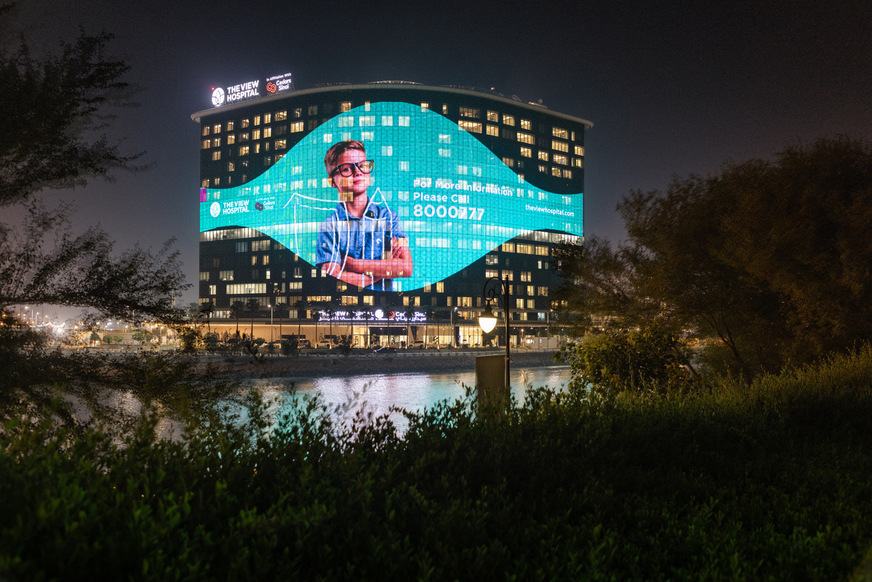
Dow Studios
The new health centre is located half an hour's drive from Hamad International Airport. The location directly on the banks of an estuary offers a view of the waters of the Persian Gulf and an excellent prospect of the Doha skyline.
See also: Successful refurbishment of a production hall with a luminous facade
The international architecture firm Chapman Taylor was responsible for the special design of the facade.
The architects used water as a defining element of the surroundings in an elegant and timeless glass facade. With a size of 8000 square metres, it covers almost the entire front.
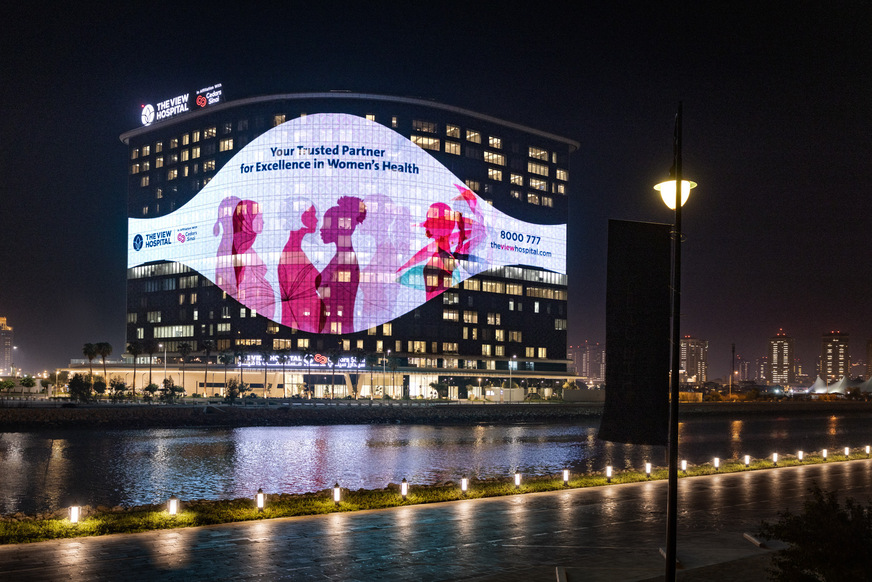
Dow Studios
Regular floral ornaments structure the large surface, while water appears to flow in gentle waves across the entire width. A visual effect created by LED lighting that is permanently integrated into the glass facade using liquid lamination.
Glass elements with integrated LEDs
Loca technology (Liquid Optical Clear Adhesives), a liquid lamination from adhesive and sealant manufacturer H.B. Fuller I Kömmerling, was used for the glass elements. In collaboration with the South Korean partner Glaam, the so-called G-Glass was created. This consists of two panes in which the rear pane is provided with a conductive and at the same time transparent coating to create the necessary electrical conductivity.
This surface is processed by lasers so that only a grid of fine conductive tracks remains, onto which the corresponding LEDs are then placed and fixed. A second glass pane is then placed on top of the LED pane at a distance of 1.5 to 2.5 mm.
Finally, the space between the panes is filled with liquid Loca products from H.B. Fuller I Kömmerling. This ensures that all gaps are filled and that all integrated components are completely enclosed.
The element is then gently cured under UV-A light. The LED louvres embedded between the glass panes can later be controlled with any content; depending on the LED used, the image produced is black and white or colourful.
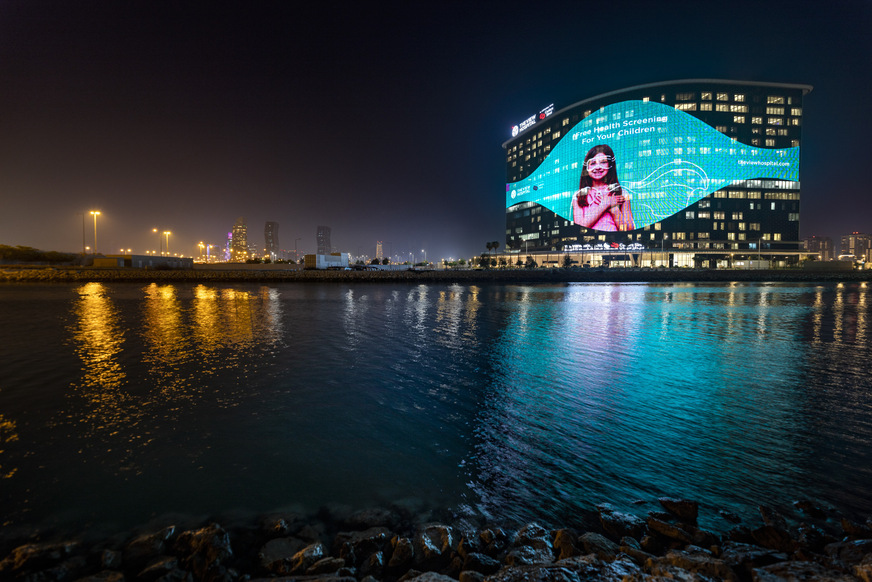
Dow Studios
What are the advantages of Loca technology?
The design properties of the laminated glass produced with Loca, such as G-Glass, provide a whole range of advantages. Loca technology does not require high pressures and temperatures during processing.
Thanks to passive curing, sensitive electronic components such as LEDs or functional films can be safely embedded in the polymer interlayer of the laminated glass. In addition, the Liquid Optical Clear Adhesives have two decisive advantages for architects: their optical quality combined with high mechanical stability.
Also interesting: Very special IG units for "The Sphere" in Las Vegas
Loca remains completely transparent after curing, which ensures crystal-clear glass panes and sufficient light penetration inside buildings. The integrated LEDs are virtually invisible in daylight and allow an unobstructed view to the outside.
The facade of the clinic in Doha features 4000 square metres of G-Glass elements made with Loca.







